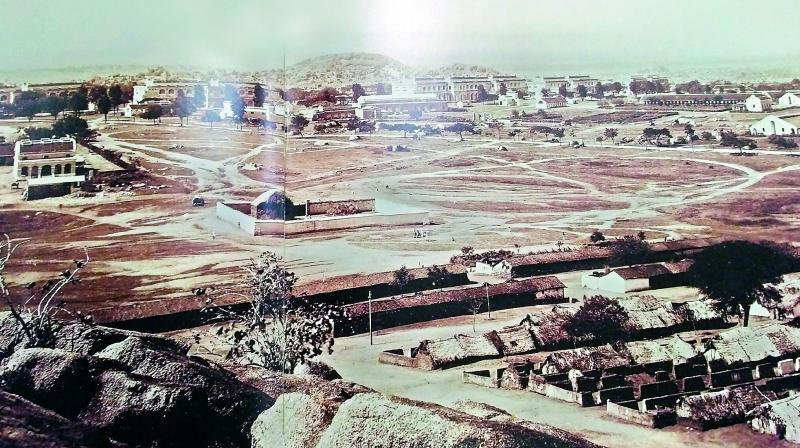Sendurabad Cantonment among largest of 60 Cantonments in India

Hyderabad: The Secunderabad Cantonment Board has been in the news ever since the Telangana Government submitted a proposal to the Centre, seeking the parade ground land for the construction of a new Secretariat. Occupying 9,167 acres of land, the Secunderabad Cantonment is one of the largest of the 60 cantonments in the country. Former Civil Servant Narendra Luther has authored a book titled Lashkar, which includes a detailed account of the history of Secunderabad.
In his book, he mentions that the Secunderabad Cantonment was the first to provide a home for the army in the South. Before the defeat and death of Tipu Sultan in 1799, the army remained on the move and lived in tents. In 1801, only three-years after the establishment of the Cantonment, Mountstuart Elphinstone and Edward Strachey, two civil servants of the East India Company, visited it during a trip to Hyderabad. In his diary, Strachey wrote that the Cantonment occupied an area of roughly two miles, that the huts of the troops formed a considerable town.
Elphinstone noted that the city of tents was extremely neat. Eventually, the camp expanded to an area of about 35.2 square km. In 1806, Nizam-III Sikander Jah accepted Captain Sydenham’s request to name the Cantonment after him. It was then that it came to be known as Secunderabad. About two decades later, Captain Meadows Taylor penned a novel titled Confessions of a Thug, in which he described the Cantonment through the eyes of Ameer Ali, the thug, as he approached it from the Alwal side.
“We passed the village of Alwal, its white pagoda peeping from among grooves of tamarind and mango trees, and its large tank now glistening in the rays of the sun; and pursuing our way, we saw on passing a ridge of rocks, the camp of the army at the far-famed Hussain Sagar, or as it is more often called, Secunderabad. The tents of the English forces glistened in the bright sun, and behind them lay a vast sheet of blue water.”
The Cantonment evolved over time, but it remained a tented township. Changes in its shape and structure came about as a result of disturbances in Secunderabad, and the Mutiny of 1857. In the book, Mr Luther describes Cantonment life as being known for excessive drinking, racing, gambling and hunting of big game. A race course was established by Nawab Ghalib Jung, and it was used until 1968. Historians say that the parade ground was used by the Nizam's army and by British troops, after a subsidiary alliance was formed between them. Soldiers would conduct parades, exercise, and carry out training activities.
There are pictures of Nizam VI Mir Mahbub Ali Khan reviewing a parade at the ground. After Independence, Secunderabad Cantonment was taken over by the Indian Defence Forces, and it has been a major centre for the army ever since. Apart from the gymkhana and the parade ground, where 8,000 troops can manoeuvre with ease, the Cantonment also has a polo ground, a gymkhana cricket oval, hockey grounds and football grounds.

